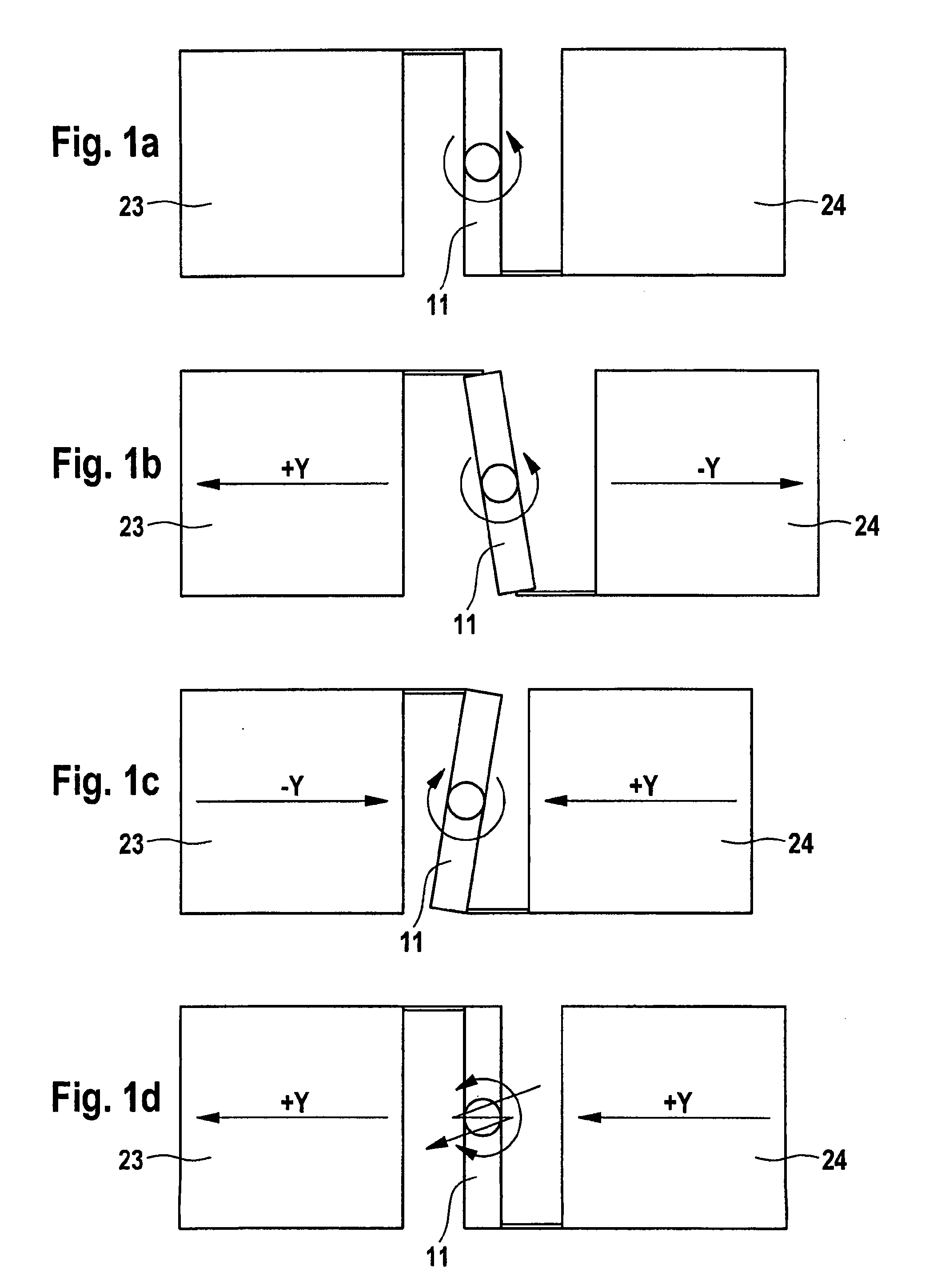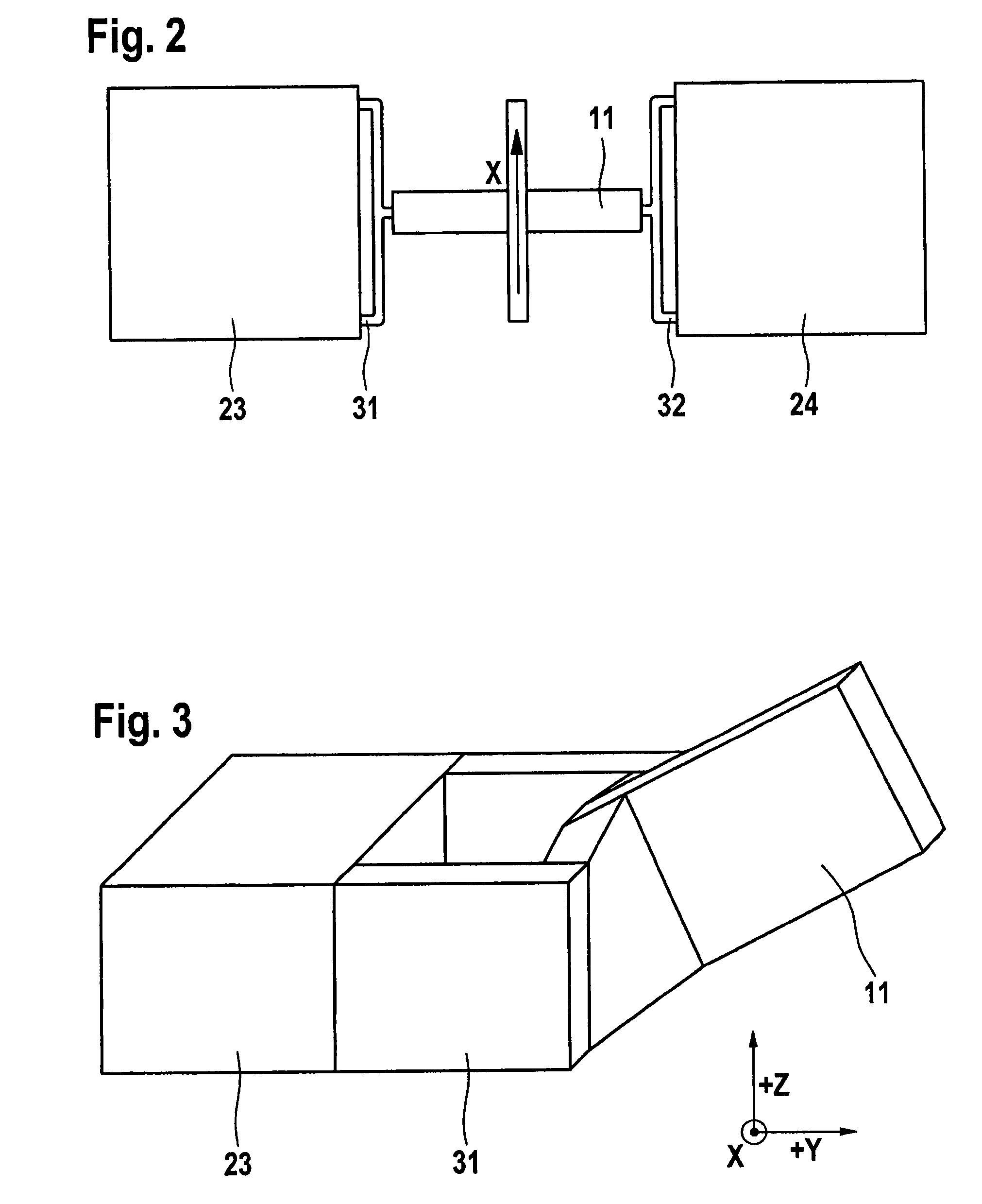Rotational Speed Sensor Having A Coupling Bar
a technology of rotating speed sensor and coupling bar, which is applied in the direction of acceleration measurement using interia force, turn-sensitive devices, instruments, etc., can solve the problems of affecting the measurement, the coupling of seismic masses by means of the proposed coupling unit is sensitive to parallel interference excitation in the measuring direction, etc., to avoid or reduce parasitic modes and interference deflections
- Summary
- Abstract
- Description
- Claims
- Application Information
AI Technical Summary
Benefits of technology
Problems solved by technology
Method used
Image
Examples
Embodiment Construction
[0070]FIG. 1a shows the suspension diagram of a rotationally suspended rigid coupling bar 11 which suppresses or prevents undesired common-phase deflections of the seismic masses 23 and 24 in the drive mode. In the drive mode, seismic masses 23 and 24 oscillate with respect to one another in antiphase in the y direction. FIG. 1b illustrates here the method of functioning of the coupling bar as the seismic masses move apart from one another, while FIG. 1c shows the corresponding coupling principle when the seismic masses 23 and 24 move toward one another. When the seismic masses 23 and 24 move apart from one another or toward one another, the coupling bar 11 is therefore deflected rotationally, specifically about the z axis. FIG. 1d illustrates the method of functioning of the coupling bar 11 in the case in which the seismic masses 23 and 24 wish to move in the same direction, in this case both wish to move in the y direction to the left, owing, for example, to interference. This mov...
PUM
| Property | Measurement | Unit |
|---|---|---|
| Speed | aaaaa | aaaaa |
| Gravity | aaaaa | aaaaa |
Abstract
Description
Claims
Application Information
 Login to View More
Login to View More - R&D
- Intellectual Property
- Life Sciences
- Materials
- Tech Scout
- Unparalleled Data Quality
- Higher Quality Content
- 60% Fewer Hallucinations
Browse by: Latest US Patents, China's latest patents, Technical Efficacy Thesaurus, Application Domain, Technology Topic, Popular Technical Reports.
© 2025 PatSnap. All rights reserved.Legal|Privacy policy|Modern Slavery Act Transparency Statement|Sitemap|About US| Contact US: help@patsnap.com



